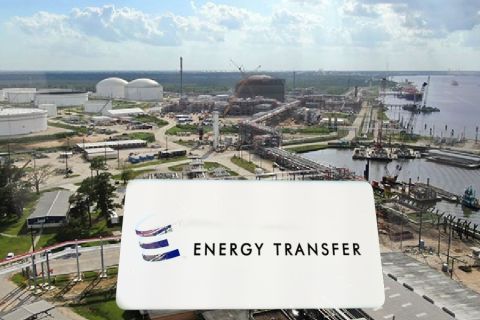“We cannot solve our problems with the same thinking we used when we created them,” said Albert Einstein. He has also been oft-quoted proclaiming, “A person who never made a mistake, never tried anything new.”
It doesn’t take a genius to fathom that the Australian oil and gas industry is confronting the challenge of change and needs to embrace innovative strategies as it enters a post-construction, LNG production phase compounded by volatile market headwinds.
Some sceptics might chorus “we told you so” as the industry grapples with weaknesses that tended to be overlooked during boom times, but now demand decisive action to steer the sector in the right direction.
The good news is that the sector isn’t about to go hurtling over the cliffs of doom, even if government and corporations had, during good times, danced to the complacent tune of a Pied Piper.
A recent, refreshing ray of enlightenment emerged with the release of the Energy White Paper by the Department of Industry and Science, which acknowledged the urgency of addressing pressing issues.
Most significant was the comment that “the LNG export industry provides enormous opportunity for the economy” as a key component of an energy sector which “drives economic growth and a high national standard of living”.
The paper elaborated that in 2013-2014, the energy sector accounted for 7 per cent of GDP, $71.5 billion in export earnings, employed 170,000 people and provided significant infrastructure investments.
But the eureka moment arrived with the recommendation; “Tightening supplies on the east coast are not helped by unnecessary policy barriers imposed by some states on new onshore production. Australian government will continue to work through Council of Australian Governments (COAG) to address this problem.”
In pursuit of this objective, the report states that responding to the challenge will require a cohesive approach toward increasing supply, stimulating competition and transparency in the gas market and encouraging more flexible trading arrangements.
The paper endorses the Australian Government’s aversion to a domestic gas reservation policy that would discourage investment in new production and says the Australian Competition and Consumer Commission will look at the effectiveness of competition in the gas market, particularly upstream.
The Department of Industry and Science has projected that within the next five years, Australia’s annual energy export earnings will reach $114 billion. It concludes that investment, particularly foreign investment, is essential to realising the potential of Australia’s natural resources and highlights action that needs to be taken to promote Australia as an investment destination.
Tangible relief in West Perth might reverberate in Victoria and New South Wales in the finding that “unnecessary state regulatory barriers are limiting much-needed new gas supply” and the recommendation, “Regulation of energy markets should encourage competition and, as much as possible, be consistent across the country to avoid unnecessary regulation and associated costs for energy suppliers and consumers operating across borders.”
The report also suggests, “Improved access to pipelines to enable gas to be more readily traded between different locations will help build a more competitive domestic gas market, together with improving the availability of market information on prices and available supply.”
The White Paper was barely inked before Industry and Science Minister Ian Macfarlane announced a domestic gas strategy emphasising the urgency for responsible development of Australia’s unconventional resources.
Macfarlane said the strategy would support discussions with state governments that have “primary responsibility for onshore gas development” and inform COAG on ways to address unnecessary barriers to bringing on new gas supplies.
Einstein, I am sure, would approve these winds of change blowing as Australia steps up to effect critical changes that will define the oil and gas sector for decades to come.
But now politicians and state regulators need to follow suit, taking their cue from the White Paper and Macfarlane’s initiative by abandoning cumbersome, unproductive and costly policies and embracing new innovations and attitudes.
The recovery of the industry is as reliant on rebounding commodity prices as business and government pulling together towards mutually beneficial objectives, instead of swimming upstream by enacting onshore drilling bans in Victoria and applying heavy-handed regulations in New South Wales. Hiking tenement fees 798 per cent in three years in Western Australia, while 30 per cent haircuts in capital and operational costs have been the norm.
Einstein also defined insanity as “doing the same thing over and over again and expecting different results,” but perhaps the maxim most relevant to Australia is. “You have to learn the rules of the game. And then you have to play it better than anyone else.”
Recommended Reading
‘Oversupplied’ NatGas Market Aiding Williams’ Storage Business
2024-05-08 - Midstream company Williams saw overall demand growth as heavy gas volumes passed through its network.
Energy Transfer Eyes Draft Environmental Statement for Blue Marlin Project This Quarter
2024-05-09 - Energy Transfer is among several firms vying to build deepwater ports along the Texas Gulf Coast.
Energy Transfer Remains Hungry for M&A, Sees 1Q Oil Volumes Surge
2024-05-09 - Energy Transfer reported record first-quarter crude volumes and expects demand for petrochemicals to continue rising.
Enbridge Plans to Increase Permian Oil Pipeline’s Capacity
2024-05-10 - Midstream company Enbridge announced an open season on the Gray Oak Pipeline for a proposed 120,000 bbl/d expansion and updated its M&A efforts.
Developer Seeks Permit to Send US Gas to Mexico for LNG Exports
2024-05-22 - The project is the latest in a series of developments to convert U.S. gas into LNG and export it from Mexico's Atlantic and Pacific coasts to meet global demand.



